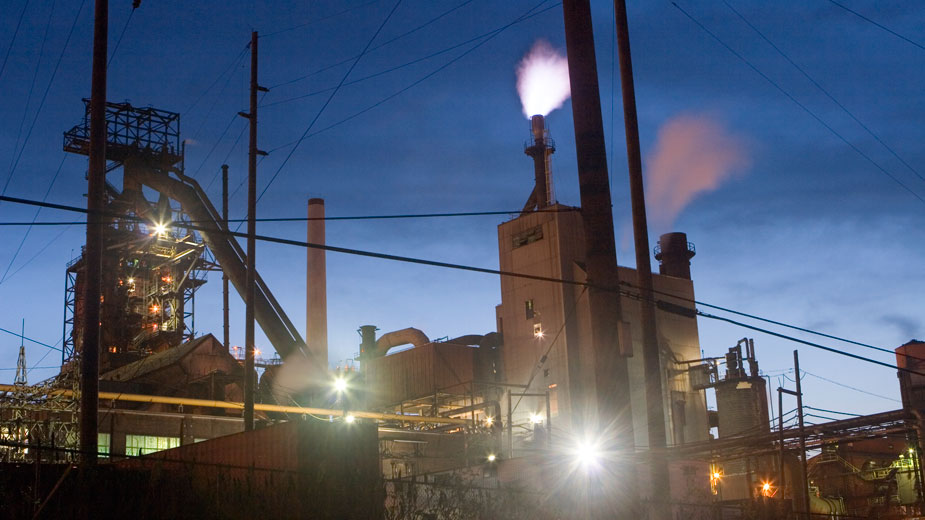Piece by Piece, Last Blast Furnace Will Disappear
WARREN, Ohio — The weather will determine the pace of the last scene of the last act — the demolition of the blast furnace of the last steel mill here.
The blast furnace is all that remains of the Trumbull Cliffs furnace built in record time in 1921, which became the largest in the world in 1939 as Republic Steel Corp. expanded it because America’s entry into World War II loomed on the horizon.
Crews from MCM Management of Bloomfield Hills Mich., are preparing to demolish the Trumbull Cliffs blast furnace, the last in the valley.
Red tape used to mark off the areas of asbestos abatement was gone from the site Wednesday.
“We have to disconnect about eight pipes from the powerhouse before the actual demolition can begin,” said Leroy Stults, site manager for MCM. Arcelor Mittal Warren also uses the powerhouse to run the coke ovens nearby, he explained.
The history of making iron and steel in the Mahoning Valley can be traced back more than two centuries to when the first iron-producing furnace west of the Allegheny Mountains, the Hopewell Furnace, began operations near Struthers. It was succeeded by a variety of other primitive furnaces and eventually by the massive fully integrated steel mills that once lined miles of the Mahoning River.
A partnership between Cleveland Cliffs and the Trumbull Steel Co. led to construction of the Trumbull Cliffs furnace in 1921. The Trumbull Cliffs Furnace Co. became part of Republic Steel during the Great Depression. In 1939, Republic expanded the furnace as the war in Europe seemed imminent.
The conversion of the Warren plant to the basic oxygen system of steelmaking allowed Trumbull Cliffs to outlive the antiquated open-hearth furnaces in and around Youngstown. After the LTV Corp. acquired the assets of Republic, the furnace passed into the hands of several other companies, including WCI and Severstal Steel, until RG Steel finally closed the plant in 2012 after declaring bankruptcy.
BDM Warren Steel Holdings, the current owner, has demolished most of the old plant surrounding the furnace.
Unlike the demolition of the U.S. Steel Ohio Works in 1984 – it caught the attention of the world — or the Jeannette blast furnace on the north side of Youngstown in 1997, Trumbull Cliffs will not be brought down in a sudden implosion.
“This is not a typical demolition of a structure where the whole building comes down in one day,” said Tara Cioffi, environmental health director for the Mahoning County Air Pollution Control Agency. “It’s going to be mechanically pulled apart piece by piece.”
Neither Stults or Cioffi could provide a date for the completion of the demolition. “Usually they give themselves six months to a year,” Cioffi said. “I don’t have a time frame on it. It’s probably going to be dependent on weather.”
–Reported by Sean Posey
Pictured: Night view of the former RG Steel’s blast furnace when it was still operating in 2011.
Copyright 2024 The Business Journal, Youngstown, Ohio.



